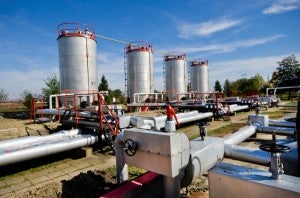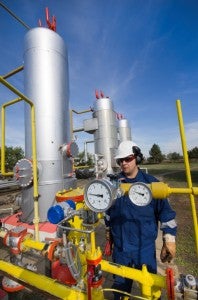Illinois is two-for-two on clean energy wins. Today, Illinois legislators introduced a bill to spur significant new growth in the clean energy industry, creating an estimated 32,000 jobs annually across Illinois once proposed clean energy standards are fully implemented. Already a leader in America’s clean energy economy, Illinois, with this bill, would help boost the 100,000 clean energy jobs that already exist in the state, protect our children and future generations from the impacts of climate change, as well as maintain a reliable and affordable electricity system.
Energy Exchange
Illinois Bill Pledges More Clean Energy Jobs, Boost to Economy, and Cleaner Air
Duke University Documents Widespread Benefits of North Carolina’s Solar Economy
 North Carolina’s number-one ranking in the Southeast for solar energy investment confirms the state is a national leader in attracting clean energy companies and creating jobs. But a top ranking does not fully reflect the broad range of benefits North Carolina’s large-scale solar industry is delivering to the state’s manufacturing sectors and rural communities.
North Carolina’s number-one ranking in the Southeast for solar energy investment confirms the state is a national leader in attracting clean energy companies and creating jobs. But a top ranking does not fully reflect the broad range of benefits North Carolina’s large-scale solar industry is delivering to the state’s manufacturing sectors and rural communities.
Now a report from Duke University documents how the state’s solar industry is boosting the bottom line of companies and communities across North Carolina.
The Solar Economy: Widespread Benefits for North Carolina credits state policies such as the Renewable Energy Portfolio Standard and Renewable Energy Investment Tax Credit with stimulating economic development.
It highlights a recent economic impact assessment by RTI International showing that for every dollar of Investment Tax Credit redeemed by businesses, $1.93 has been returned to state and local governments. That’s a great deal for North Carolina.
The report spotlights three key findings: Read More
Studies Provide Insight on Two Overlooked Segments of Oil and Gas Industry
Scientists David Lyon and Ramón Alvarez contributed to this post

Two studies released today in the journal of Environmental Science and Technology provide new insights into methane emissions from significant sources in the oil and natural gas sector and underscore the urgency of taking action to address pollution from these sources. The studies—focusing on the gathering and processing segment and the transmission and storage segment—were led by researchers at Colorado State and Carnegie Mellon universities and Aerodyne Research, and included collaboration with EDF and companies in each of these segments.
In the gathering and processing study, researchers measured 130 gathering and processing facilities, finding emissions at gathering facilities ranging from 0.6 to 600 standard cubic feet of methane leaking per minute (scf/m). For the transmission and storage study, a different team led by CSU also collected extensive on-site and downwind measurements of methane at 45 transmission and storage sites. Site-level methane measurements ranged from 2 to 880 scf/m, with an average measurement of 70 scf/m. Of all the facilities measured for these studies, data suggests the natural gas emitted was worth about $25 million and had the 20-year climate impact equal to the emissions of 2 million passenger vehicles. Read More
A Possible Antidote to the Fossil Fuel Economy
 Much has been written about the causes of the recent downturn in world oil prices. So it shouldn’t be much of a surprise to hear that many places which derive a significant share of their economic activity from oil production have begun to feel the effects of this downturn.
Much has been written about the causes of the recent downturn in world oil prices. So it shouldn’t be much of a surprise to hear that many places which derive a significant share of their economic activity from oil production have begun to feel the effects of this downturn.
As less money is taken from the sale of each barrel of oil produced, both major and local economies alike – from Alberta, to Texas, the Middle East, and Kern County – have seen a rapid decline in their tax base and overall economic output. In some cases, the drop in oil money has been so rapid and significant that some jurisdictions have declared fiscal emergencies.
Whether from layoffs at oil and gas operators, or government program cuts due to reduced tax collection, the downturn associated with reduced oil and gas profits shows just how fragile, and damaging, the fossil fuel-based economy can be. Just as families are hit in the pocketbook when prices at the pump shoot up, so too are many family livelihoods hurt when prices plummet. With this lose-lose proposition, we need to know now: are other options available?
Thankfully, there is another way. A new report released today from the fuels and energy consulting firm Promotum, (commissioned by Environmental Defense Fund, Natural Resources Defense Council, and Union of Concerned Scientists) shows that an abundance of locally-based, alternative fuels is on the horizon. According to Promotum, the state is on track to achieve significant fuel diversification by 2020 and cut carbon emissions associated with fuel production and use. This positive forecast also means we can expect prolonged domestic economic growth from emergent alternative fuel companies up and down the state. Read More
SfunCube: Lighting the Way for Solar Innovation in California
![]() EDF’s Innovators Series profiles companies and people across California with bold solutions to reduce carbon pollution and help the state meet the goals of AB 32. Each addition to the series will profile a different solution, focused on the development of new technology and ideas.
EDF’s Innovators Series profiles companies and people across California with bold solutions to reduce carbon pollution and help the state meet the goals of AB 32. Each addition to the series will profile a different solution, focused on the development of new technology and ideas.
By: Anna Doty, West Coast Policy Associate
Emily Kirsch calls herself a “solar-lifer.” Kirsch came onto the solar scene by way of former Obama advisor Van Jones’ green jobs campaign in Oakland. Now, as the co-founder and CEO of Oakland-based SfunCube—the world’s only solar-exclusive start-up business accelerator—Kirsch is growing California’s clean economy in an entirely new way and she knows the future of solar is bright.
Nestled in the heart of downtown Oakland, SfunCube—Solar for Universal Need—is supporting a growing “solar ecosystem” of the most promising solar startups that are making the San Francisco Bay Area the nation’s epicenter for solar innovation and entrepreneurship. Recently, I had the opportunity to talk with Emily Kirsch and some of the solar pioneers who are working at SfunCube to make universal access to solar a reality in California, throughout the US, and around the world.
In California today, there are over 1,889 solar companies that are part of the solar supply chain, creating more than 50,000 jobs—roughly a third of all the solar jobs in the country—and that is no coincidence. Read More
4 Reasons a National Methane Policy Will be Good for Business
 After months of anticipation, the Obama Administration this month released its new methane emissions strategy – a plan that opens up new opportunities for industry writ large, and especially for operators that want to cut waste and get ahead.
After months of anticipation, the Obama Administration this month released its new methane emissions strategy – a plan that opens up new opportunities for industry writ large, and especially for operators that want to cut waste and get ahead.
The centerpiece of the strategy are imminent rules that will help us meet a new national goal to reduce harmful methane pollution from oil and natural gas operations by 45 percent by 2025.
But the rules also bring direct industry benefits. Here are four reasons the new methane emissions strategy is a boon, rather than bane, for America’s $1.2-trillion oil and gas sector:
1. It tackles $1.8 billion in annual waste and adds market certainty
Leaky infrastructure and unnecessary venting across the oil and gas value chain cost an estimated $1.8 billion in wasted product and lost revenue annually.
The new rules require companies to include up-to-date controls as they build out new and modified infrastructure, keeping gas in the pipeline while making new facilities more efficient. Read More









